How To Choose Right Technology Stack For Web App Development
When it comes to developing a successful web application, one of the most important thing is to choose the right technology stack. Reason being, the right technology stack boosts the performance of the application. Conversely, the application you are building, the features it includes, and the complexity of app design also influences to choose technology stack for the app.
As an entrepreneur, Tech stack will not interest you, and you’ll look up to your technology partners to make the decision, but in case your development team does not have expertise in full-stack technologies, you cannot identify which technology is right for your app.
So, in such a scenario, you must have a general understanding of the web app technology stack. It helps you achieve your targets effectively and speak a similar tech language as well.
Therefore, in this article, we’ve shared the process of what needs to be considered when selecting a technology stack. It covers everything you need to know, from what is a technology stack to its structure, and what factors to consider while making the selection.
Without further discussion, Let’s dig into this
What is Technology Stack?
What is Technology Stack?
With the terminology, you would have guessed that a tech stack is a combination of software tools, frameworks, and programming languages used for mobile or web app development.
In web development, the technology is comprised of frontend, backend and database.
Structure of a technology stack
Structure of a technology stack
1. Front-End
In simple words, Front end is the face of the app which the user sees. All user interaction happens here. In a web app, users can only see and interact with this part of the app. The front end access of web app users is carried out with safari, chrome and other web browsers.
Thus, designing an engaging web-app with right front end technologies is crucial.
The major technologies that are incorporated in Front-end development are:
● HTML
● CSS
● AJAX
● JavaScript
HTML: is a Hypertext Markup Language used for describing the structure of content presented on a webpage. HTML has various versions like any other software. The recent one is HTML5. At Deligence Technologies, we use the latest version of HTML., HTML5
CSS: Cascading Style Sheets is a style sheet language that describes how the web app written on HTML will look and formatted of a written document.
JavaScript: JavaScript is used for creating dynamic and interactive web pages. The Javascript uses animations for simple and complex web applications to contribute to positive user experience.
2. Back-End The back-end enables logics or equations that are used to power frontend where users perform certain actions. The backend is not visible to the user side but it is the main part of the app structure. The backend consist of web server, database and The web server, which is part of the backend, accepts requests from a browser, processes these requests according to a certain logic, turns to the database if needed, and sends back the relevant content.
Some of the most popular programming languages and their major frameworks are:
● PHP – (Laravel, CodeIgniter)
● Python – (Django, Flask, Pylons)
● Golang – (Gin Gonic, Beego, Martini)
● Ruby – (Ruby on Rails)
● JavaScript – (Nest.js, Meteor.js, Express.js)
3. Database The database is a content management system where all the user and owner generated data is saved. The database organises the information in the form of files or data records like product catalogues, sales transactions, wishlist and much more.
There are many popular databases but it is chosen based on the client requirements of the project:
● PostgreSQL
● MySQL
● MongoDB
● Redis
● Firebase
When all these components are combined together( Frontend, backend and mid base), it makes web app technology stack.
So, now you have a clear understanding of the technology stack, Let’s move to Key Criteria to Choose the Right Technology Stack.
Choosing Right Technology Stack For Web App Development
Choosing Right Technology Stack For Web App Development
As mentioned earlier, the type of app you needs impact the choice of technology required to build the app. Copying competitors will not help here. Your product is unique and has different requirements from that of your competitor product.
The unique product has varying requirements, and to meet that you can use a combination of technologies to develop a great app.
When deciding the components of the technology stack, consider the below-mentioned criteria to make the right choice:
1. Complexity of the App
The complexity of the app means the level of design, the features it includes and its functionality. The more complex an App is, the more advanced technology is required. As your web app grows, the complexity of the project also increases. Thus, the complexity and size of the app go hand in hand. The more features your app has to over, the more complex landing pages it will require. Therefore, you have to understand what plan you have for app development to choose the relevant tools. It’s important that you list down the features you want to include and ask the development team to provide the app model to understand what technology will be the best for development.
All web apps can be classified into 3 types in terms of size and complexity:
● Simple in complexity and small in size: In this, web apps have fewer features and easy functionality. It incorporates simple design, landing pages and purchase stores.
● Mid-level complexity and medium in size: These are more functional than simple apps. Medium-sized projects typically involve multiple systems, so it usually requires more complex technology. Development teams incorporate cross-platform technology to make it function on all platforms and panels. Financial, digital stores, and enterprise applications need a more complex stack with a combination of languages. These types of apps many features and have landing pages. Mid-level apps are developed using frameworks such as Angular and Node.js.
● High complexity and large in size: Social networks and marketplaces fall into large size apps. These apps require much higher performance, scalability, speed, and serviceability. The large-sized apps have High level of complexity as it involves multiple landing pages for each panel i.e For Admin, User and Supply Personnel. Deciding on a tech stack for a complex project requires consideration of both functional and non-functional requirements.
2. Scalability
Scalability of a web application is its ability to handle the load. For instance, if the number of app users increases, the technology stack must allow the app to take the grow and not crash when the user inputs data.
Therefore, your developers must choose a technology that supports both horizontal growth as well as vertical growth. Horizontally by adding physical machines or processing units to the server to handle user growth. And Vertically by adding extra software or Third Party APIs to add new features & functionalities as your user’s demand.
3. Time to market
If your product needs to be developed and launched as soon as possible, minimum viable product Development (MVP) is the best to go with. MVP development follows a rule where the most important features are launched to the audience at the first stage and later after collecting feedback from early adopters, you make important changes in features of your web app.
However, if you have a unique set of features that adds up to app functionality, go for full web app development. Tie up with a web development company with years of experience and launch the app in one go.
4. Maintainability
This is an important factor to consider in web app development. Your job doesn’t end at by merely developing an app. It needs proper maintenance like any other device to keep it free from any bugs or issues. Particularly, two factors are there on which the maintainability of your web app relies on:
● Architecture: The architecture of your web application should support reusability, portability, and scalability. It must incorporate extra frameworks that build an app structure users not only love but also find easy to navigate.
● Codebase: The codebase of your app shouldn’t be too short or too lengthy. Too lengthy codebase takes longer time to process and also increases loading time. Thus, choose a programming language that is concise and is easy to maintain and reuse.
5. Web App Development Cost
Developing an app requires investments. And the app development cost depends on underlying factors:
Features – what all features needed to be included in the app.
Complexity of the app
Level of Designs – MVP, Basic, or Polished
Scalability, Performance, Security
Any other specific requirement
The App maintenance and developer fees are inclusive in the cost
To which, It is important to decide beforehand how much you are willing to spend on to create a web app of your own.
6. App Security
App security is the main concern of any stakeholders associated with it. App requires security from any data theft and leakage. Some programming languages are safer than others. If your web app highly depends on client data, ensure to assess thoroughly the security means the which tech stack offers.
Advanced authentication and authorization processes are extremely necessitous. Thus, include 2-3 level authentication to protect the user data.
7. Licenses
Buying security subscriptions, technologies, tools, and frameworks from paid sources can add up to the cost. Make sure you apply to open-source solutions. Some technologies offer partial free services, so buy a subscription plan, if the developer needs to access its premium features.
Things To Avoid While Picking A Tech Stack For Web App
Things To Avoid While Picking A Tech Stack For Web App
Many entrepreneurs fail to make a robust app that drives engagement because they make one or more of these following mistakes when choosing technology stack for their web app.
1. Copying Competitors
Assessing your competitors to make rightful decisions is the right strategy. but it doesn’t always pay off. As mentioned earlier, your app is unique and offers unique functionality. Thus requires a unique combination of tech stack. You simply can’t copy your competitors’ whole technology stack.
2. Personal Preferences
If you’ve knowledge and experience in application development, you can probably choose the technology stack on your own. But it is more appropriate to consult developers who have years of experience and have build up skills in the same. Reason being there is a high possibility of choosing the wrong components of tech stack. App development is a one-time process thus it is highly important to avoid such errors.
3. Online Research
The search engines are overwhelmed with information provided on each topic. Solely following them can be confusing, thus, it is better to ask an expert than rely on Internet research. The App development companies access your project in phase zero and try to provide the best recommendations and solutions to it.
Takeaway
These are the important factors you need to consider while choosing a tech stack. Do not just depend on trending technologies, do a research and choose one which is best for your web app. The wrong selection of a tech stack may lead you to the financial crisis. Better take expert advice on it. Make sure the tech stack is best for your user experience. As they are the ones for whom you are developing an app. If you need any help in choosing tech stack or developing it, feel free to consult our web app experts.
If you want to build a website on your own, you can try Strikingly.




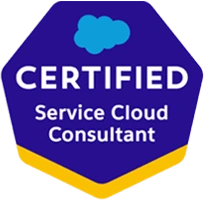

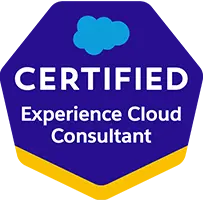
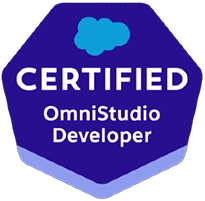
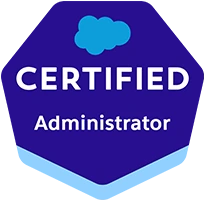
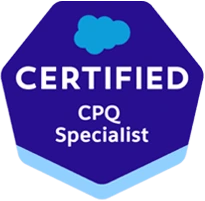
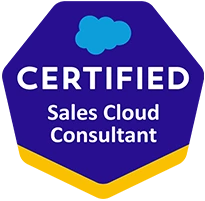
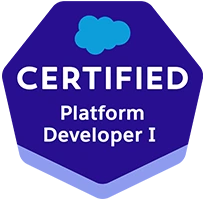
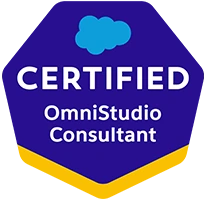
This article provides a comprehensive guide on selecting the right technology stack for web app development. It effectively outlines the components of a tech stack—front-end, back-end, and database—and their roles. Key factors such as app complexity, scalability, time to market, and maintainability are well-explained. The piece also emphasizes the importance of aligning technology choices with the unique needs of the project and avoiding common pitfalls like copying competitors or relying solely on online research. This approach ensures that readers are well-informed to make strategic decisions for their web app development.